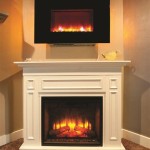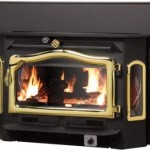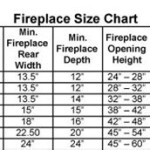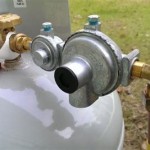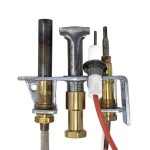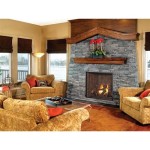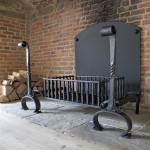Gas Fireplace Insert Blower Replacement: A Comprehensive Guide
Gas fireplace inserts offer an efficient and aesthetically pleasing way to heat a home. A crucial component often overlooked in these inserts is the blower. A properly functioning blower significantly enhances the fireplace's heating capacity by circulating warm air into the room. When the blower fails, the fireplace's effectiveness diminishes, prompting the need for replacement.
This article provides a comprehensive guide to understanding the function of a gas fireplace insert blower, recognizing the signs that it needs replacing, selecting the appropriate replacement blower, and outlining the general steps involved in the replacement process. This information empowers homeowners to make informed decisions regarding the maintenance and repair of their gas fireplace inserts.
Understanding the Role of the Blower in a Gas Fireplace Insert
The blower in a gas fireplace insert is essentially a fan unit designed to circulate warm air generated by the fireplace. Without a blower, the heat produced by the insert would primarily radiate directly from the unit, leading to uneven heating and potentially overheating the area immediately surrounding the fireplace. The blower draws cooler air from the room, passes it over the heated firebox, and then expels the warmed air back into the room, creating a convection current. This convection process distributes heat more evenly throughout the space, maximizing the fireplace's heating efficiency and improving overall comfort.
The blower assembly typically consists of a fan motor, a fan blade or squirrel cage, and a housing that directs airflow. The speed of the blower can often be adjusted, allowing users to control the amount of heated air circulated. Some blowers also include thermal sensors that automatically activate the blower when the fireplace reaches a certain temperature and deactivate it when it cools down. This automation helps to optimize energy usage and maintain a consistent room temperature.
The effectiveness of a gas fireplace insert is heavily reliant on the proper function of the blower. A malfunctioning or inefficient blower can significantly reduce the fireplace's ability to heat a room effectively, leading to increased energy consumption and decreased comfort. Therefore, understanding the blower's role and being able to identify potential problems is critical for maintaining the optimal performance of a gas fireplace insert.
Recognizing the Signs of a Failing Gas Fireplace Insert Blower
Several indicators suggest that a gas fireplace insert blower may be failing and requires replacement. Early detection of these signs can prevent further damage to the fireplace and ensure continued efficient heating. Paying attention to the following symptoms can save time and money in the long run.
Reduced Airflow: One of the most obvious signs of a failing blower is a noticeable reduction in the amount of warm air being circulated into the room. If the fireplace is operating normally, but the airflow from the vents is weak or nonexistent, the blower is likely malfunctioning. This could be due to a weakening motor, a clogged fan blade, or a damaged blower housing.
Unusual Noises: A healthy blower operates relatively quietly. Unusual noises, such as rattling, grinding, squealing, or humming, can be indicative of a problem. Rattling noises often suggest loose components or debris lodged in the blower assembly. Grinding or squealing noises may point to worn-out bearings in the motor. Humming noises could indicate a failing motor attempting to start or run improperly.
Intermittent Operation: If the blower starts and stops sporadically, or only works intermittently, it could be a sign of a failing motor, a loose connection, or a faulty thermal sensor. Intermittent operation can also be caused by overheating, which can trigger a safety shutoff mechanism in the blower. Repeated instances of intermittent operation warrant further investigation.
Burning Smell: A burning smell emanating from the fireplace area is a serious concern and should be addressed immediately. This smell could indicate that the blower motor is overheating and potentially burning out. Continued operation with a burning smell can lead to further damage and potentially pose a fire hazard. Disconnecting the fireplace and inspecting the blower is essential.
Lack of Automatic Activation: If the blower is equipped with a thermal sensor that automatically activates the blower when the fireplace is hot, and it fails to do so, the sensor may be malfunctioning. This can result in the fireplace overheating and not distributing heat efficiently. While the blower may still be functional when manually activated, the failure of the automatic sensor indicates a problem that should be addressed.
If any of these signs are observed, it is recommended to inspect the blower assembly and, if necessary, consult with a qualified technician to diagnose the problem accurately and determine the appropriate course of action.
Selecting the Correct Replacement Blower
Choosing the right replacement blower is crucial for ensuring the proper functioning and optimal performance of the gas fireplace insert. Selecting an incompatible blower can lead to inefficient heating, damage to the fireplace, or even safety hazards. Several factors must be considered when selecting a replacement blower.
Manufacturer and Model Compatibility: The most important factor is to ensure that the replacement blower is compatible with the specific make and model of the gas fireplace insert. The manufacturer's specifications will typically list the recommended blower models or provide the necessary technical specifications for selecting a suitable replacement. Using a blower not designed for the specific fireplace can result in poor performance or damage to the unit.
CFM (Cubic Feet per Minute) Rating: The CFM rating indicates the volume of air that the blower can move per minute. The CFM rating should match the original blower's specifications to ensure adequate airflow and efficient heat distribution. A blower with a significantly lower CFM rating will not circulate enough air, while a blower with a significantly higher CFM rating may consume excessive energy and potentially damage the fireplace's components.
Voltage and Amperage: The replacement blower must have the same voltage and amperage requirements as the original blower. Using a blower with incorrect voltage or amperage can damage the fireplace's electrical system or the blower motor itself. The voltage and amperage requirements are typically listed on the blower's motor label or in the fireplace insert's user manual.
Physical Dimensions: The physical dimensions of the replacement blower must be compatible with the space available within the fireplace insert. The blower should fit snugly within the designated compartment without any obstruction to the airflow. Ensure that the mounting points align correctly and that there is sufficient clearance for the fan blade to rotate freely.
Bearing Type: The type of bearing used in the blower motor can affect its lifespan and noise level. Sleeve bearings are generally quieter but have a shorter lifespan compared to ball bearings. Ball bearings are more durable and can handle higher speeds, but they may produce slightly more noise. Consider the trade-offs between noise level and durability when choosing a blower with a specific bearing type.
Certifications and Safety Standards: The replacement blower should meet relevant safety standards and certifications, such as UL (Underwriters Laboratories) or CSA (Canadian Standards Association). These certifications ensure that the blower has been tested and meets specific safety requirements for electrical appliances. Purchasing a certified blower helps to mitigate the risk of electrical hazards and ensures safe operation.
By carefully considering these factors and consulting with a qualified technician if needed, selecting the correct replacement blower will ensure the optimal performance, efficiency, and safety of the gas fireplace insert.
General Steps for Gas Fireplace Insert Blower Replacement
Replacing a gas fireplace insert blower can be a relatively straightforward process for homeowners with some experience in electrical and mechanical repairs. However, it is crucial to prioritize safety and follow proper procedures to avoid injury or damage to the fireplace. If unsure about any step, consulting a qualified technician is strongly recommended. The following provides a general overview of the replacement process. Before commencing any work, ensure the gas supply to the fireplace is shut off and the unit is completely cool. Disconnect the power supply to the fireplace to prevent electrical shock.
Accessing the Blower Assembly: The first step is to gain access to the blower assembly. This usually involves removing the front panel or lower access panel of the gas fireplace insert. The exact procedure will vary depending on the specific model of the fireplace. Consult the manufacturer's instructions for detailed steps on removing the access panel.
Disconnecting Electrical Connections: Once the blower assembly is accessible, carefully disconnect the electrical connections to the blower motor. This typically involves disconnecting wires from terminals or unplugging connectors. Take note of the wiring configuration before disconnecting the wires to ensure correct reconnection later. Using a digital camera to take a picture of the wiring is useful. Some blowers are hardwired directly to the fireplace; these will need to be carefully disconnected, and labeled or photographed.
Removing the Old Blower: After disconnecting the electrical connections, remove the old blower from its mounting. This may involve unscrewing mounting screws, loosening clamps, or sliding the blower out of its housing. Be careful not to damage any surrounding components during the removal process.
Installing the New Blower: Position the new blower in the same orientation as the old blower and secure it to its mounting. Ensure that the mounting screws or clamps are tightened securely and that the blower is properly aligned within the housing. Double-check that the fan blade rotates freely without any obstruction.
Reconnecting Electrical Connections: Reconnect the electrical connections to the new blower motor, ensuring that the wires are connected to the correct terminals or connectors. Refer to the wiring diagram or the notes taken during the disconnection process to ensure proper reconnection. Verify that all connections are tight and secure.
Testing the New Blower: Before reassembling the access panel, test the new blower to ensure it is functioning correctly. Turn on the power supply to the fireplace and activate the blower. Verify that the blower starts smoothly, circulates air effectively, and operates quietly. Check for any unusual noises or vibrations. If the blower does not function properly, double-check the electrical connections and the blower's mounting.
Reassembling the Fireplace: If the new blower is functioning correctly, reassemble the front panel or lower access panel of the gas fireplace insert. Ensure that all panels are securely fastened and properly aligned. Double-check that all components are in their original positions before restoring the gas supply.
Final Inspection: After reassembling the fireplace, perform a final inspection to ensure that everything is functioning correctly. Turn on the gas supply to the fireplace and ignite the flames. Monitor the blower's operation and verify that it is circulating warm air effectively. Check for any leaks or unusual smells. If any problems are detected, immediately shut off the gas supply and disconnect the power supply and consult a qualified technician.
These general steps provide a guideline for replacing a gas fireplace insert blower. However, it is crucial to consult the manufacturer's instructions for the specific model of the fireplace insert, as the procedures may vary. Prioritizing safety and taking necessary precautions will ensure a successful and safe blower replacement.

Noisy Gas Fireplace Blower Here S How To Replace It Diy

Diy Repair Gas Fireplace Replaced My Blower Motor With Bad Bearing And Crazy Loud Noise

Regency Fan Blower Replacement Gas Inserts U32 2 910 215 P Friendly Fires

Fireplace Blower Replacement Fan Kit For Twin Star Electric Wood Gas Stove

Installing A Fireplace Blower Gfk4 Gfk4a In Heatilator Natural Gas

Fireplaces Inserts Wood Gas Fireplace Xtrordinair
:max_bytes(150000):strip_icc()/ventless-gas-fireplaces-4160746-hero-f9d4bdcd9bd446eb84406de306f790ba.jpg?strip=all)
How To Pick Out A Ventless Gas Fireplace

Napoleon Variable Sd Fan Blower Control Kb 35

Considering A Ventless Gas Fireplace Here S What You Need To Know Bob Vila

